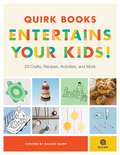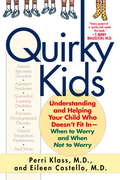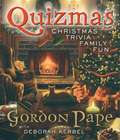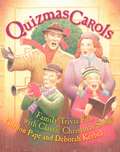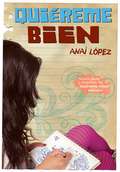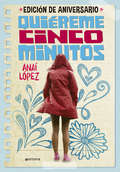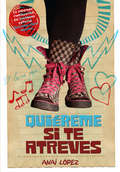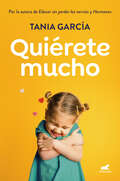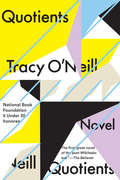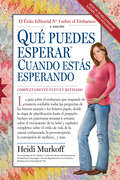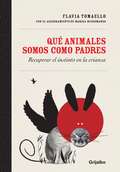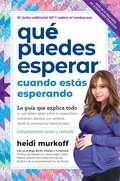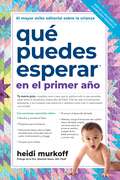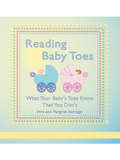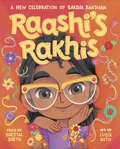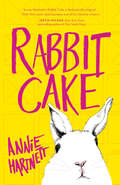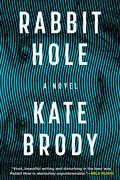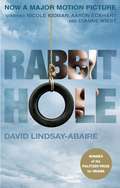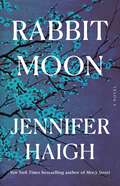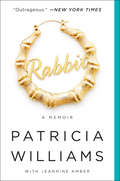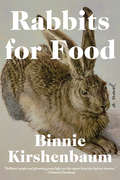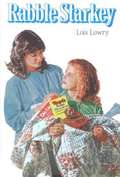- Table View
- List View
Quirk Books Entertains Your Kids: 20 Crafts, Recipes, Activities, and More!
by Raising QuirkThis summer, Raising Quirk&’s mission is to keep your kids from ever having to say &“I&’m bored.&” So we&’ve rounded up our favorite crafts, recipes, games, and activities from Quirk Books titles and jam-packed them into our funnest, awesomest, and kid-friendliest e-sampler yet. Whether you&’re taking your family on the road or stuck indoors on a rainy day, we&’ve got you covered. Projects include: COOKING: How to Teach a Kid to Cook Robot Bites Banana Split Pops Little-Bitty Fudge Puppies CRAFTING: Bottle-Cap FramesStarburst Straws Turtle Magnet Get Your Kid to Clean Up OUTDOOR ADVENTURE: Get Your Kid to Put On Sunscreen Plan a Scavenger Hunt Yakima! Choreograph a Fight Scene Nick and Tesla&’s Low-Tech (Practically No-Tech) Bottle Rocket and Launcher RAINY DAY ANTICS: Get Your Kid to Play Alone Futaleufú Mattress Rafting Put on a Comedy Show Learn a Magic Trick FUN ON THE GO: How to Keep a Family Happy During Car Trips Make Trail Mix and Hit the Trails! How to Build a Sand Castle Games to Play in the Car Children don&’t come with an owner&’s manual, so Raising Quirk brings together advice, activities, entertainment, and, most important, other parents who still feel kinda like kids themselves. Our motto: We help cool parents raise cool kids. After all, parenting is a lifelong adventure, and we&’re all in it together. Consider us your virtual playgroup and join us at Raising Quirk online.
Quirky Kids
by Perri Klass Eileen CostelloThe toddler whose tantrums scare all the other kids on the playground . . . The three-year-old who ignores all his toys but seems passionately attached to the vacuum cleaner . . . The fourth-grade girl who never gets invited to a birthday party because classmates think she’s “weird” . . . The geek who is terrific at math, but is failing every other subject. Quirky children are different from other kids in ways that they–and their parents and teachers–have a hard time understanding or explaining. Straddling the line between eccentric and developmentally impaired, quirky children present challenges that standard parenting books fail to address. Now, inQuirky Kids, nationally known writer/pediatrician Perri Klass and her colleague Eileen Costello, a seasoned pediatrician with a special interest in child development, finally provide the expert guidance and in-depth research that families with quirky children so desperately need. A generation ago, such children were called odd ducks or worse. But nowadays, they are often assigned medical, psychiatric, or neurological diagnoses. The diagnoses often overlap or shift, but the labels can be frightening. Klass and Costello illuminate the confusing list of terms applied to quirky children these days–nonverbal learning disability, sensory integration disorder, obsessive-compulsive behavior, autistic spectrum disorder, pervasive developmental disorder, Asperger’s syndrome–and explain how to assess what exactly each diagnosis means and how to use it to help a child most effectively. Quirky Kidstakes you through the stages of a child’s life, helping to smooth the way at home, at school, even on the playground. How do you make it through mealtime, when emotions often erupt? How do you help the child’s siblings understand what’s going on? Is it better to “mainstream” the child or seek a special education program? How can you make a school more welcoming and flexible for a quirky child? How do you help your child deal with social exclusion, name-calling, and bullying? Choosing the right therapy for quirky children is especially difficult, because their problems fall outside traditional medical categories. Coping strategies might include martial arts or horseback riding, or speech and occupational therapies. Klass and Costello cover all the options, as well as offer a thorough consideration of the available medications, how they work, and whether medication is the best choice for your child. Drs. Klass and Costello firmly believe that the ideal way to help our quirky kids is to understand and embrace the qualities that make them exceptionally interesting and lovable. Written with upbeat clarity and informed insight, their book is a comprehensive guide to loving, living with, and enjoying these wonderful if challenging children.
Quirky Kids
by Perri Klass Eileen CostelloThe toddler whose tantrums scare all the other kids on the playground . . . The three-year-old who ignores all his toys but seems passionately attached to the vacuum cleaner . . . The fourth-grade girl who never gets invited to a birthday party because classmates think she's "weird" . . . The geek who is terrific at math, but is failing every other subject. Quirky children are different from other kids in ways that they-and their parents and teachers-have a hard time understanding or explaining. Straddling the line between eccentric and developmentally impaired, quirky children present challenges that standard parenting books fail to address. Now, in Quirky Kids, nationally known writer/pediatrician Perri Klass and her colleague Eileen Costello, a seasoned pediatrician with a special interest in child development, finally provide the expert guidance and in-depth research that families with quirky children so desperately need.A generation ago, such children were called odd ducks or worse. But nowadays, they are often assigned medical, psychiatric, or neurological diagnoses. The diagnoses often overlap or shift, but the labels can be frightening. Klass and Costello illuminate the confusing list of terms applied to quirky children these days-nonverbal learning disability, sensory integration disorder, obsessive-compulsive behavior, autistic spectrum disorder, pervasive developmental disorder, Asperger's syndrome-and explain how to assess what exactly each diagnosis means and how to use it to help a child most effectively. Quirky Kids takes you through the stages of a child's life, helping to smooth the way at home, at school, even on the playground. How do you make it through mealtime, when emotions often erupt? How do you help the child's siblings understand what's going on? Is it better to "mainstream" the child or seek a special education program? How can you make a school more welcoming and flexible for a quirky child? How do you help your child deal with social exclusion, name-calling, and bullying? Choosing the right therapy for quirky children is especially difficult, because their problems fall outside traditional medical categories. Coping strategies might include martial arts or horseback riding, or speech and occupational therapies. Klass and Costello cover all the options, as well as offer a thorough consideration of the available medications, how they work, and whether medication is the best choice for your child. Drs. Klass and Costello firmly believe that the ideal way to help our quirky kids is to understand and embrace the qualities that make them exceptionally interesting and lovable. Written with upbeat clarity and informed insight, their book is a comprehensive guide to loving, living with, and enjoying these wonderful if challenging children.From the Hardcover edition.
Quirky Kids: Understanding and Helping Your Child Who Doesn't Fit In- When to Worry and When Not to Worry
by Perri Klass Eileen CostelloThe toddler whose tantrums scare all the other kids on the playground . . . The three-year-old who ignores all his toys but seems passionately attached to the vacuum cleaner . . . The fourth-grade girl who never gets invited to a birthday party because classmates think she’s “weird” . . . The geek who is terrific at math, but is failing every other subject. Quirky children are different from other kids in ways that they–and their parents and teachers–have a hard time understanding or explaining. Straddling the line between eccentric and developmentally impaired, quirky children present challenges that standard parenting books fail to address. Now, in Quirky Kids, nationally known writer/pediatrician Perri Klass and her colleague Eileen Costello, a seasoned pediatrician with a special interest in child development, finally provide the expert guidance and in-depth research that families with quirky children so desperately need.A generation ago, such children were called odd ducks or worse. But nowadays, they are often assigned medical, psychiatric, or neurological diagnoses. The diagnoses often overlap or shift, but the labels can be frightening. Klass and Costello illuminate the confusing list of terms applied to quirky children these days–nonverbal learning disability, sensory integration disorder, obsessive-compulsive behavior, autistic spectrum disorder, pervasive developmental disorder, Asperger’s syndrome–and explain how to assess what exactly each diagnosis means and how to use it to help a child most effectively. Quirky Kids takes you through the stages of a child’s life, helping to smooth the way at home, at school, even on the playground. How do you make it through mealtime, when emotions often erupt? How do you help the child’s siblings understand what’s going on? Is it better to “mainstream” the child or seek a special education program? How can you make a school more welcoming and flexible for a quirky child? How do you help your child deal with social exclusion, name-calling, and bullying? Choosing the right therapy for quirky children is especially difficult, because their problems fall outside traditional medical categories. Coping strategies might include martial arts or horseback riding, or speech and occupational therapies. Klass and Costello cover all the options, as well as offer a thorough consideration of the available medications, how they work, and whether medication is the best choice for your child. Drs. Klass and Costello firmly believe that the ideal way to help our quirky kids is to understand and embrace the qualities that make them exceptionally interesting and lovable. Written with upbeat clarity and informed insight, their book is a comprehensive guide to loving, living with, and enjoying these wonderful if challenging children.From the Hardcover edition.
Quizmas
by Gordon Pape Deborah KerbelStart a new Christmas tradition with Quizmas Ever wonder why we kiss under the mistletoe? Are the lights on the Christmas tree just pretty decorations or do they symbolize something deeper? And speaking of Christmas trees, where did that idea come from? Why would we bring a tree into our homes, hang ornaments on it, and treat it as the focal point of Christmas morning? Answers to these questions and hundreds more can be found in this delightful and utterly unputdownable collection of fabulous Christmas trivia. "Loads of fun...the perfect stocking stuffer."--Santa
Quizmas Carols
by Gordon Pape Deborah KerbelIn this fun and festive follow-up to Plume's popular Quizmas and Family Quizmas trivia books, Gordon Pape and Deborah Kerbel turn to the holiday season's best-loved songs. Featuring an introduction to the history of Christmas carols; Quizmas-style questions organized by era, region, and genre; and interesting stories about the carols themselves; Quizmas Carols covers every favorite tune, from "The First Noel" to "The Chipmunk Song." Do you know: * What carol was written by a newspaper reporter? * Which Judy Garland movie introduced "Have Yourself a Merry Little Christmas"? * Which carol became a hymn against slavery in its English translation? * In which European city Handel's "Messiah" was first performed? * Which cowboy movie star wrote "Here Comes Santa Claus"? Full of little-known facts and merry multiple-choice answers, Quizmas Carols is the perfect stocking stuffer for anyone who loves the music of Christmas. [Answers: "We Three Kings of Orient Are," Meet Me in St. Louis, "O Holy Night," Dublin, Gene Autry]
Quiéreme bien (Trilogía de Elena #Volumen 3)
by Anaí LópezElena Balboa tiene diecinueve años y también tiene trece. Dos tiempos simultáneos narrados desde su presente. De un capítulo a otro, de una página a la otra, nos llevará por todo tipo de experiencias que nos harán testigos de las coincidencias y los contrastes entre dos momentos clave en la vida de una joven. Tras el éxito conquistado con Quiéreme cinco minutos y Quiéreme si te atreves, regresa Elena Balboa, que ahora se la vive entre desveladas y cafés, sacando fotocopias, escapándose a la playa, estudiando, descubriendo, reventando, subida en la montaña rusa de una nueva e intensa etapa de su vida: la universidad. Pero comenzar a ser adulto no es fácil cuando nadie te sigue el paso. Elena siente que sus amigos de la prepa se quedaron a años luz, su hermano parece un burócrata cuarentón y su mamá se porta como si tuviera dieciséis. A veces cree que está sola en sus ansias por cambiar al mundo, y sólo parece entenderla un profesorque le mueve el tapete. Eso no sería tan grave si no tuviera un novio que la adora, pero que empieza a dar señales de querer volar alto... y lejos. A ratos Elena se siente más confundida que cuando tenía trece años y descubrió que el mundo no era tan rosa como se lo habían pintado. Con las agallas y sentido del humor que la caracterizan, Elena se lanza otra vez a una trepidante aventura. Ahora más que nunca, está dispuesta a demostrarse que está hecha de lo que se necesita para ser una gran mujer. Una que sabe querer bien.
Quiéreme cinco minutos
by Anaí LópezLa presente obra es esencialmente un símbolo del lenguaje de los chavos de la ciudad de México así como la representación de la cultura adolescente y los sentires propios de la edad. Quiéreme cinco minutos es una historia de amor y de grandes aventuras: todas las que caben en el recorrido de una mujer para convertirse en mujer. Edición de lujo conmemorativa de la exitosa novela de Anaí López, que incluye un capítulo inédito. Elena tiene 15 años y va en tercero de secundaria. Tiene muchos lunares y no le gusta su pelo. No es muy aplicada en la escuela y, aunque tiene pegue, se siente insegura desde que empezó a crecer más en talla de brassier que en estatura. Pero también es simpática, intensa y está enamorada de quien no debe. El año escolar está a punto de terminar. Un amigo de Elena ha concebido un plan maestro para robar el examen final de Física. En las semanas siguientes, Elena tendrá su primer novio y lidiará con la traición de su mejor amiga, con los problemas de alcohol de su papá y con los límites confusos de su cuerpo y su cabeza; para colmo, tendrá que romper un corazón para saber hasta dónde llega el suyo. En el camino, Elena se lleva más de un trancazo y toma más de una mala decisión; pero nunca deja de hacer lo que siente y de enfrentar las encrucijadas que se le presentan con un gran sentido del humor.
Quiéreme si te atreves (Trilogía de Elena #Volumen 2)
by Anaí LópezSegunda parte del libro Quiéreme cinco minutos. La protagonista, Elena, ahora está en el último año de la preparatoria y debe afrontar situaciones más complicadas que pondrán prueba su carácter y el de su familia. Elena tiene diecisiete años y está empezando Quinto de Prepa. Todos le han dicho que es el año más perro, y Elena está a punto de comprobarlo. Aunque lo más difícil para ella no será la escuela... La situación en su casa está peor que nunca: su papá no puede dejar el alcohol, su mamá se ha sumado a un grupo de extremistas espirituales y su hermano está hecho un idiota con su novia, que pesa cuarenta kilos. Todo se complica cuando Elena se enamora perdidamente y además le corresponden. Pero vivir esa clase de amor no es fácil cuando al mismo tiempo estás lidiando con los excesos de tus amigos, la búsqueda de una vocación (si eso existe), y tratando de hacer entender a tus papás que no eres una rebelde ni estás loca ni perturbada, sólo tienes diecisiete años e intentas ser feliz. Pero Elena tiene algunos aliados en el año más complicado de su vida: un taller de teatro, el apoyo de sus amigos y la capacidad de ver las cosas desde muchos puntos de vista, sin perder nunca el sentido del humor. Quiéreme si te atreves es la segunda parte de una historia de amor y de grandes aventuras, que acompaña muy de cerca a una joven mujer en su recorrido para convertirse en una gran mujer.
Quiérete mucho: Descubre cómo fomentar la autoestima de tus hijos para que crezcan felices
by Tania García«Una buena autoestima es la base que todas las personas necesitamos para ser felices y convertirnos en quienes deseamos ser». Por la aclamada autora de Educar sin perder los nervios. En su nuevo libro, Tania García nos brinda las herramientas y los conocimientos necesarios para entender los distintos aspectos que conforman la autoestima; para aprender a fomentarla en nuestros hijos, en sus diferentes etapas de desarrollo y para integrar el autocuidado como una parte fundamental en su educación. El resultado es un texto imprescindible que nos ayuda a conocernos en profundidad y a identificar a los enemigos del amor propio. Así, y a través de un enfoque claro y de ejercicios prácticos, podremos trabajar mejor uno de los conceptos psicológicos de mayor trascendencia en el crecimiento y bienestar personal de nuestros hijos: su autoestima.
Quotients
by Tracy O'NeillTwo people search for connection in a world of fractured identities and aliases, global finance, big data, intelligence bureaucracies, algorithmic logic, and terror. Jeremy Jordan and Alexandra Chen hope to make a quiet home together but struggle to find a space safe from their personal secrets. For Jeremy, this means leaving behind his former life as an intelligence operative during The Troubles in Northern Ireland. For Alexandra, a high-powered job in image management for whole countries cannot prepare her for her missing brother&’s sudden reappearance.In a culture of limitless surveillance, Jeremy and Alexandra will go to great lengths to protect what is closest to them. Spanning decades and continents, their saga brings them into contact with a down-and-out online journalist, shadowy security professionals, and jockeying technology experts, each of whom has a different understanding of whether information really protects us, and how we might build a world worth trusting in our paranoid age.
Qué Puedes Esperar Cuando Estás Esperando: 4th Edition (What to Expect)
by Heidi Murkoff Sharon Mazel<P>Announcing the new Spanish-language translation of What to Expect When You're Expecting: 4th Edition, America's pregnancy bible with over 16 million copies in print. Originally published as Que se Puede Esperar Cuando Se Esta Esperando, this new edition is a livelier, less formal, altogether more user-friendly Spanish-language version. <P>Approximately 1 million Hispanic-American women give birth each year. This is a book for the mother-to-be who either doesn't speak English or doesn't feel comfortable with her English; for the doctor who is having trouble communicating with a patient; for the expectant parents at a stressful time when what's most familiar—their first language—is most welcome. The book will be the book to turn to for the broad range of Spanish-speaking Americans in the United States—be they Puerto Ricans in the Northeast, Cuban-Americans in Florida, Mexican-Americans on the west coast, Dominicans, and Spanish-speaking Americans of Spanish, and Central and South American descent.
Qué animales somos como padres: Recuperar el instinto en la crianza
by Flavia TomaelloUna guía útil y divertida para padres desorientados pero decididos arecuperar su instinto, su creatividad y su sentido común para criarhijos que sean únicos en su especie: peculiares, amados y plenos. La reciente reivindicación de las madres tigre como ejemplo de unacrianza basada en la exigencia, la disciplina y el rigor abrió, una vezmás, el debate sobre cómo educar a nuestros hijos y para qué: ¿para quesean exitosos o felices? ¿Para que triunfen o se sientan satisfechos consus vidas?Con humor y lucidez, Flavia Tomaello propone en este libro un modelo queescapa a los binarismos (tigre vs. conejo) y ofrece, en cambio, un«zoológico» completo de arquetipos con los cuales identificarse yreflexionar: ¿qué clase de animal soy como padre/madre?
Qué puedes esperar cuando estás esperando: 5th edition (What to Expect)
by Heidi MurkoffAmerica&’s pregnancy bible, newly revised. With over 21 million copies sold, it remains the most trusted resource for those with babies on the way. Full of essential data, practical and easy-to-follow advice, realistic insight, and a great deal of reassuring information, this essential guide presents the latest about prenatal screenings, which medications are safe, and the most current birthing options. Your pregnancy lifestyle gets equal attention, too: diet, coffee drinking, exercise, work, sex, travel, beauty, skin care and more. Have pregnancy symptoms? You will—and you&’ll find answers for them all. Expecting multiples? There is a chapter for you. Expecting to become a dad? This book has you covered, too. With hundreds of questions answered—"How can I eat for two if I&’m too queasy to eat for one?,&” &“Can I work until I deliver? What are my rights on the job?,&” and &“Should we do a gender reveal? What about a 4-D ultrasound?&”—this is the one-stop-shop you&’ve been looking for. La Biblia del Embarazo en las Américas, completamente nuevo y revisado. Con más de 21 millones de ejemplares vendidos, sigue siendo el recurso más confiable para quienes tienen bebés en camino. Repleta de datos imprescindibles, consejos prácticos y fáciles de seguir, reflexiones realistas y una gran cantidad de información tranquilizadora, esta guía esencial presenta lo último sobre los exámenes médicos prenatales, qué medicamentos son seguros y las opciones para dar a luz. También aborda en detalle el estilo de vida de la embarazada: la alimentación, el consumo de café, el ejercicio físico, el trabajo, el sexo, los viajes, la belleza, el cuidado de la piel y más. ¿Tienes síntomas de embarazo desagradables? Encontrarás soluciones para todos ellos. ¿Esperando los múltiples? Hay un capítulo dedicado al tema. ¿Vas a ser papá? Este libro también es para ti. Con cientos de preguntas respondidas—"¿Cómo puedo comer por dos si tengo tantas náuseas que apenas puedo comer para mí misma?,&” &“¿Cuáles son mis derechos en el trabajo?,&” y &“¿Deberíamos dar una fiesta para revelar el sexo del bebé? ¿Debo pedir que me hagan una ecografía 4-D?&”—este libro es la fuente de información que has estado buscando.
Qué puedes esperar en el primer año
by Heidi MurkoffTranslated for the American Spanish-speaking market, the latest edition of What to Expect the First Year, Heidi Murkoff's trusted guide to parenting a newborn through the first year, with every milestone and every question answered. The Spanish-language translation of What to Expect the First Year, the baby bible with over 11 million copies in print, this is the right book for a huge audience. Close to one million Spanish-speaking women give birth in the United States every year, and this is the lively, comprehensive, and reassuring guide that these families need. It is written for readers who either don&’t speak English or feel uncertain about their English-language skills; and it is for the pediatrician who is having trouble communicating with their patients. With the trademark month-by-month format that allows parents to take the potentially overwhelming first year one step at a time, Primer Año is packed with even more practical tips, realistic advice, and relatable, accessible information than before. Updates include: Information on COVID and vaccines, including breastfeeding and developmental concerns. Baby care fundamentals—crib and sleep safety, feeding, vitamin supplements—are revised to reflect the most recent guidelines. Breastfeeding gets more coverage, from getting started to keeping it going. Hot-button topics: attachment parenting, sleep training, early potty learning (elimination communication), baby-led weaning, and green parenting (from cloth diapers to nontoxic furniture). A chapter on buying for baby helps parents navigate today's gamut of baby products, nursery items, and gear. Plus tips on preparing homemade baby food, the latest recommendations on starting solids, research on the impact of screen time, and &“For Parents&” boxes that focus on mom&’s and dad&’s needs.
READING BABY TOES: What Your Baby's Toes Know That You Don't
by Margriet Somogyi Imre SomogyiEvery parent wonders, while looking down at their newborn child, what kind of person he or she will grow up to be. This book can help parents answer that question without waiting a dozen years or more for the child to grow up. Imre & Margriet Somogyi's research as led them to believe that parents can learn to read their baby's toes for clues to their personality and behavior. "We came to realize that the toes symbolize the many facts of our personalities. Not only is their shape important, butso are their various features and positions." By learning how to read baby toes, not only will parents be able satisfy their curiosity about their newborn, but this knowledge will provide parents with a tool that will allow them to better understand their child's earliest stages of life and development and help them optimize their child's full potential, allowing him or her to develop into a healthy and well-balanced individual.
Raashi's Rakhis: A New Celebration of Raksha Bandhan
by Sheetal ShethCelebrate Raksha Bandhan in a totally new way! Little Raashi is ready to update this popular South Asian festival with her idea that both boys and girls get to trade rakhi bracelets.Raksha Bandhan is Raashi&’s favorite festival! Every year, her family comes together to dance, eat, and celebrate! Most importantly, siblings give out rakhis—beautiful handmade bracelets meant to provide protection in all of their advetures.But rakhis are traditionally only given to boys! Raashi doesn&’t like that. . . . Why don&’t girls receive rakhis too? Why do some people think that only boys go out into the world? Now it's up to Raashi to inspire the change she imagines.Sheetal Sheth, award-winning actress and author of the Anjali series, delivers another empowering story of a young girl bold enough to start her own traditions and blaze a trail toward inclusivity.
Rabbit Cake
by Annie HartnettPeople Magazine Book of the Week A Best Book of the Year at Kirkus Reviews, Book Riot, The Chicago Review of Books, Minnesota Public Radio, and more An Indies Introduce and Indie Next Pick Fans of Maria Semple's Where'd You Go Bernadette and and Kevin Wilson's The Family Fang will delight in Annie Hartnett's debut, a darkly comic novel about a young girl named Elvis trying to figure out her place in a world without her mother. Elvis Babbitt has a head for the facts: she knows science proves yellow is the happiest color, she knows a healthy male giraffe weighs about 3,000 pounds, and she knows that the naked mole rat is the longest living rodent. She knows she should plan to grieve her mother, who has recently drowned while sleepwalking, for exactly eighteen months. But there are things Elvis doesn’t yet know—like how to keep her sister Lizzie from poisoning herself while sleep-eating or why her father has started wearing her mother's silk bathrobe around the house. Elvis investigates the strange circumstances of her mother's death and finds comfort, if not answers, in the people (and animals) of Freedom, Alabama. As hilarious a storyteller as she is heartbreakingly honest, Elvis is a truly original voice in this exploration of grief, family, and the endurance of humor after loss.
Rabbit Hole
by Kate BrodyA page-turning debut mystery that&’s as addictive as a late-night Reddit binge, about a grieving woman obsessed with solving her sister&’s cold-case disappearance via the true crime fandomPerfect for fans of Gillian Flynn, My Favorite Murder, and FleabagTen years ago, Theodora &“Teddy&” Angstrom&’s older sister, Angie, went missing. Her case remains unsolved. Now Teddy&’s father, Mark, has killed himself. Unbeknownst to Mark&’s family, he had been active in a Reddit community fixated on Angie, and Teddy can&’t help but fall down the same rabbit hole.Teddy&’s investigation quickly gets her in hot water with her gun-nut boyfriend, her long-lost half brother, and her colleagues at the prestigious high school where she teaches English. Further complicating matters is Teddy&’s growing obsession with Mickey, a charming amateur sleuth who is eerily keen on helping her solve the case.Bewitched by Mickey, Teddy begins to lose her moral compass. As she struggles to reconcile new information with old memories, her erratic behavior reaches a fever pitch, but she won&’t stop until she finds Angie—or destroys herself in the process.Rabbit Hole is an outrageous and heart-wrenching character study of a mind twisted by grief, a biting critique of the internet&’s voyeurism, and an intriguing exploration of the blurry lines of female friendship.
Rabbit Hole (movie tie-in)
by David Lindsay-AbaireMovie tie-in edition of the film from Lions Gate starring Nicole Kidman, Aaron Eckhart and Dianne Wiest. Life for a happy couple is turned upside down after their young son dies in an accident.
Rabbit Moon: A Novel
by Jennifer HaighA tense, propulsive drama set in Shanghai, about a fractured American family, secret lives, and the unbreakable bond between two sisters, from the New York Times bestselling author of Mercy Street Four years after their bitter divorce, Claire and Aaron Litvak get a phone call no parent is prepared for: their 22-year-old daughter Lindsey, teaching English in China during a college gap year, has been critically injured in a hit and run accident. At a Shanghai hospital they wait at her bedside, hoping for the best and preparing for the worst. The accident unearths a deeper fissure in the family: the shocking event that ended the Litvaks&’ marriage and turned Lindsey against them. Estranged from her parents, she has confided only in her younger sister, Grace, adopted as an infant from China. As Claire and Aaron struggle to get their bearings in bustling, cosmopolitan Shanghai, the newly prosperous &“miracle city,&” they face troubling questions about Lindsey&’s life there, in which nothing is quite as it seems. With Jennifer Haigh&’s trademark psychological acuity, Rabbit Moon is a taut, suspenseful story about the ties of marriage that no divorce can sever, and the fabled red thread that pulls two sisters together across time and space. Haigh proves yet again that she is "an expertly nuanced storyteller…her work is gripping, real, and totally immersive" (New York Times).
Rabbit! Rabbit! Rabbit!
by Lorna ScobieFor fans of Too Many Carrots, this hilarious picture book follows a rabbit who's in for a big surprise—it's no longer an only child!Rabbit loves having everything—its flower, carrots, and stretching area—to itself. But then one day Rabbit's parents have BIG news . . . Rabbit now has siblings! Thankfully, the fox next door loves having rabbits around. Maybe she can help? In the tradition of books like Wolfie the Bunny, author-illustrator—and sister to MANY siblings—Lorna Scobie crafts a gleeful picture book in Rabbit! Rabbit! Rabbit! that tackles the evergreen dilemma of older siblings who must learn to share and give up solitude in exchange for the love and warmth of siblinghood. Which, as it turns out, is actually fantastic.
Rabbit: The Autobiography of Ms. Pat
by Jeannine Amber Patricia WilliamsThey called her Rabbit. <p><p> Patricia Williams (aka Ms. Pat) was born and raised in Atlanta at the height of the crack epidemic. One of five children, Pat watched as her mother struggled to get by on charity, cons, and petty crimes. At age seven, Pat was taught to roll drunks for money. At twelve, she was targeted for sex by a man eight years her senior. By thirteen, she was pregnant. By fifteen, Pat was a mother of two. <p> Alone at sixteen, Pat was determined to make a better life for her children. But with no job skills and an eighth-grade education, her options were limited. She learned quickly that hustling and humor were the only tools she had to survive. Rabbit is an unflinching memoir of cinematic scope and unexpected humor. With wisdom and humor, Pat gives us a rare glimpse of what it’s really like to be a black mom in America.
Rabbits for Food
by Binnie KirshenbaumMaster of razor-edged literary humor Binnie Kirshenbaum returns with her first novel in a decade, a devastating, laugh-out-loud funny story of a writer’s slide into depression and institutionalization. It’s New Year’s Eve, the holiday of forced fellowship, mandatory fun, and paper hats. While dining out with her husband and their friends, Kirshenbaum’s protagonist—an acerbic, mordantly witty, and clinically depressed writer—fully unravels. Her breakdown lands her in the psych ward of a prestigious New York hospital, where she refuses all modes of recommended treatment. Instead, she passes the time chronicling the lives of her fellow “lunatics” and writing a novel about what brought her there. Her story is a brilliant and brutally funny dive into the disordered mind of a woman who sees the world all too clearly. Propelled by razor-sharp comic timing and rife with pinpoint insights, Kirshenbaum examines what it means to be unloved and loved, to succeed and fail, to be at once impervious and raw. Rabbits for Food shows how art can lead us out of—or into—the depths of disconsolate loneliness and piercing grief. A bravura literary performance from one of our most indispensable writers.
Rabble Starkey
by Lois LowryMany things change for twelve-year-old Rabble Starkey, her mother, and her best friend, Veronica Bigelow, when Veronica's mother becomes mentally incapacitated and the Starkeys move in with the Bigelows.
